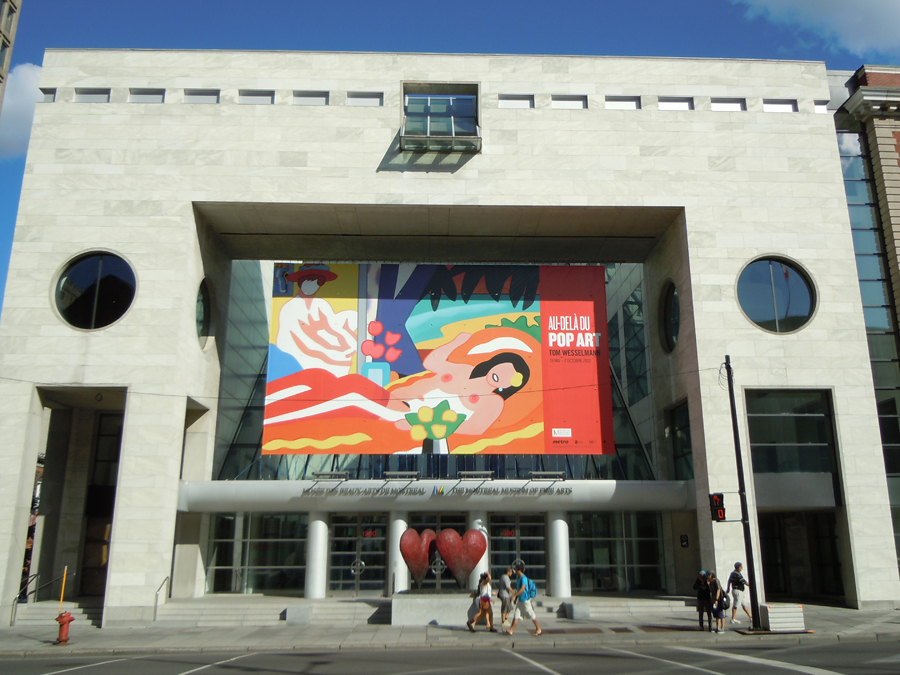A Placemaking Journal
Montreal: Lessons from great Canadian urbanism
Ever had a teacher who was so amazing at storytelling that difficult subjects become clear – and riveting? Some of my favourites that come to mind are Professors John Kraus and Robert Garbacz on electromagnetics, and Andrés Duany and Léon Krier on urbanism. The last few days, I’ve spent some time in la belle province, and I’ve felt that the Ville de Montréal is such a teacher.
Many of the design and legal issues we often discuss here on PlaceShakers, Montréal makes quick work of with some telling images. Heading on to Mont-Tremblant and Ottawa next, expect this to be the first in a series of three collections of insights from some great Canadian urbanism.
Cycling City
Outside of the fine-grained street networks and amazing architecture, the next thing that strikes me about Montreal is the exceptional cycling culture that seems to have taken over the city. The bikeshare seen here is empty, so perhaps the only complaint is getting the supply (5000 Bixi bikes) up to the increasing demand.
Downtown has given over an entire lane to a curb-separated bikeway, which is supported with bike-friendly signage and signals.
Repurposing
Recently I’ve complained about façade-ectomies in other cities. Rarely have I seen a North American city go to such great lengths to re-purpose entire structures. This building is an extreme example, wearing its archeology as a badge of courage, marking time over the 1700’s, 1800’s, and 1900’s.
Permanent Pedestrian Streets
Scott Doyon recently pointed out the challenges of pedestrian malls, along with the places in which they work. Montreal is clearly such a place, with large populations of in-town housing, four major universities, and tourists. The permanent pedestrian streets here clearly deliver, including the sublime Rue Prince Arthur Est pictured here, a favourite university student hangout.
Some of the permanent pedestrian streets here don’t behave as malls, but rather playful art pieces, like these 3,500 temporary overlay markers by Claude Cormier. Later this block will become a permanent sculpture garden. Usually we’d complain about clipping the street grid like this, however the grain is so fine here with large percentages of people on foot, it works. As does this similar treatment of outdoor seating under purple trees by the beautiful McCord Museum:
Monocultures rarely work, and while a well-done pedestrian street is satisfying, I’m wondering if this allee through McGill University really needs to ban cyclists? The cyclists clearly don’t think so.
Pedestrians of haute couture graced the streets during last week’s Festival Mode & Design.
Temporary Pedestrian Streets
Closed to cars from 17 May to 23 September, some great temporary pedestrian streets teem with life. Others close for shorter periods to handle the large numbers of pedestrians drawn by summer and festivals.
Simple Public Space
However tempting over-programming public space may be, simplicity makes a strong case for livability. Montreal plazas and squares satisfy basic needs for shade and rest, then save their investment for one central iconic feature, like a fountain or a small café. The results are timeless and so pleasing that the grass doesn’t always have to be perfect.

Terminated Vistas
Earlier this year, we discussed the terminated vista. Montreal elevates the conversation.

Century Material
Early on in this conversation we discussed re-purposing. To make capturing the embodied energy in a building a possibility, we’d have to start with century material in the first place. Buildings that are intended to last upwards of 100 years are found in abundance in Montreal, and a few of them were built in the 20th century. The 21st less so, but here’s hoping for a return to permanence.

Recommendations
Thanks again to Montreal and its planners for some delightful lessons learned. Definitely worth a visit, and if you’re heading this way soon, you’ll want to try some of the food that is as timeless as the urbanism. Around for decades with thankfully very little change, L’Express, Laloux, and Duc de Lorraine were my favourites. Also worth a visit is the Star Wars show at the Science Museum and the Biodome. Both aimed at children, our 7-year-old enjoyed the shows, however at the end of the day, preferred riding the Metro and bus system and walking the streets, along with the visit to Saint-Joseph du Mount Royal. Just as with the urbanism, the bells and whistles are rarely as valued as much as the permanence. Even if you’re seven.
–Hazel Borys
The urban lessons go on and on. In fact, this post is part of a three part series on Canadian urbanism. Read the whole thing:
Montreal: Lessons from great Canadian urbanism
Mont-Tremblant: Cottage Living in the Canadian Shield
Ottawa: Lessons from great Canadian urbanism
If PlaceShakers is our soapbox, our Facebook page is where we step down, grab a drink and enjoy a little conversation. Looking for a heads-up on the latest community-building news and perspective from around the web? Click through and “Like” us and we’ll keep you in the loop.










































